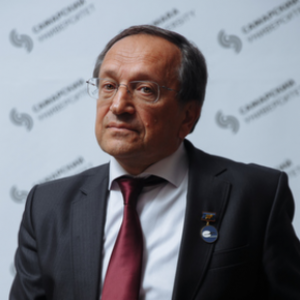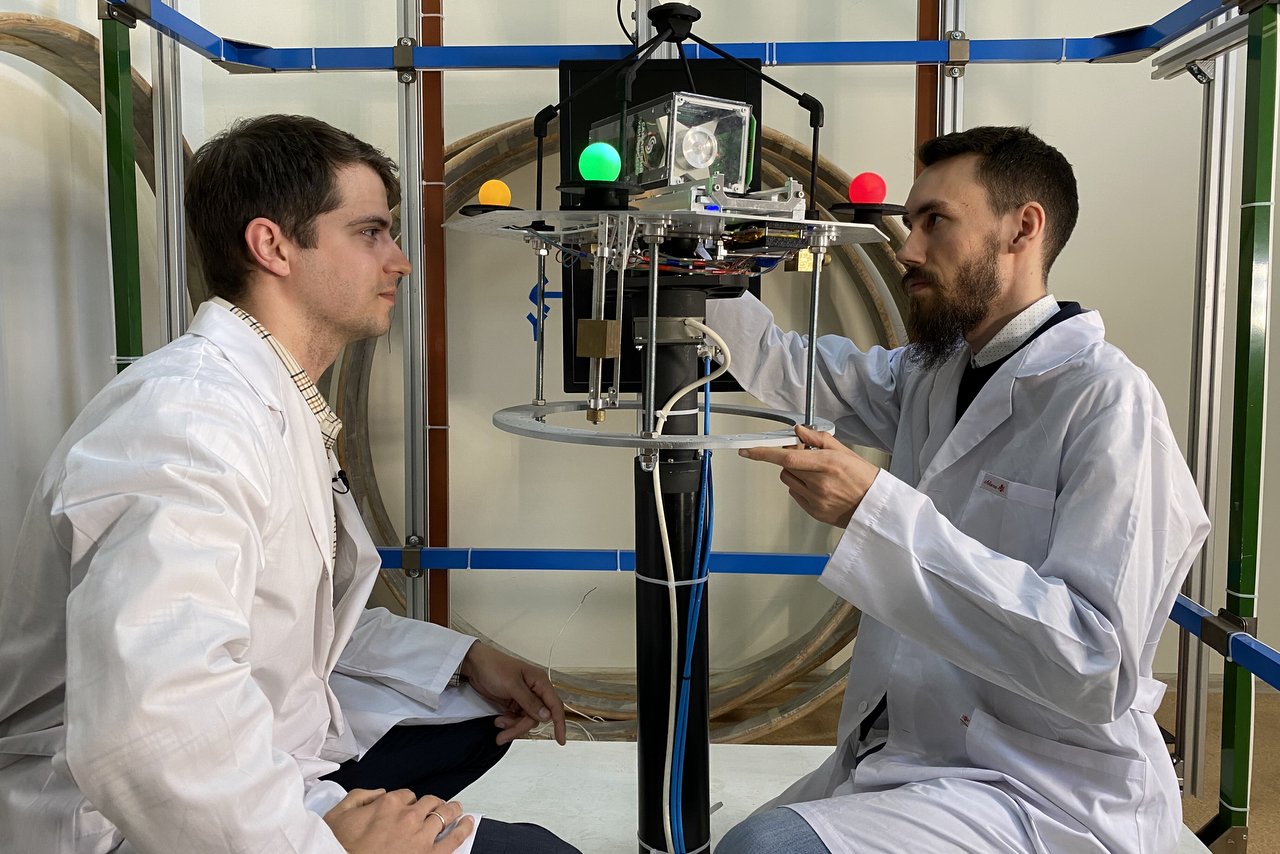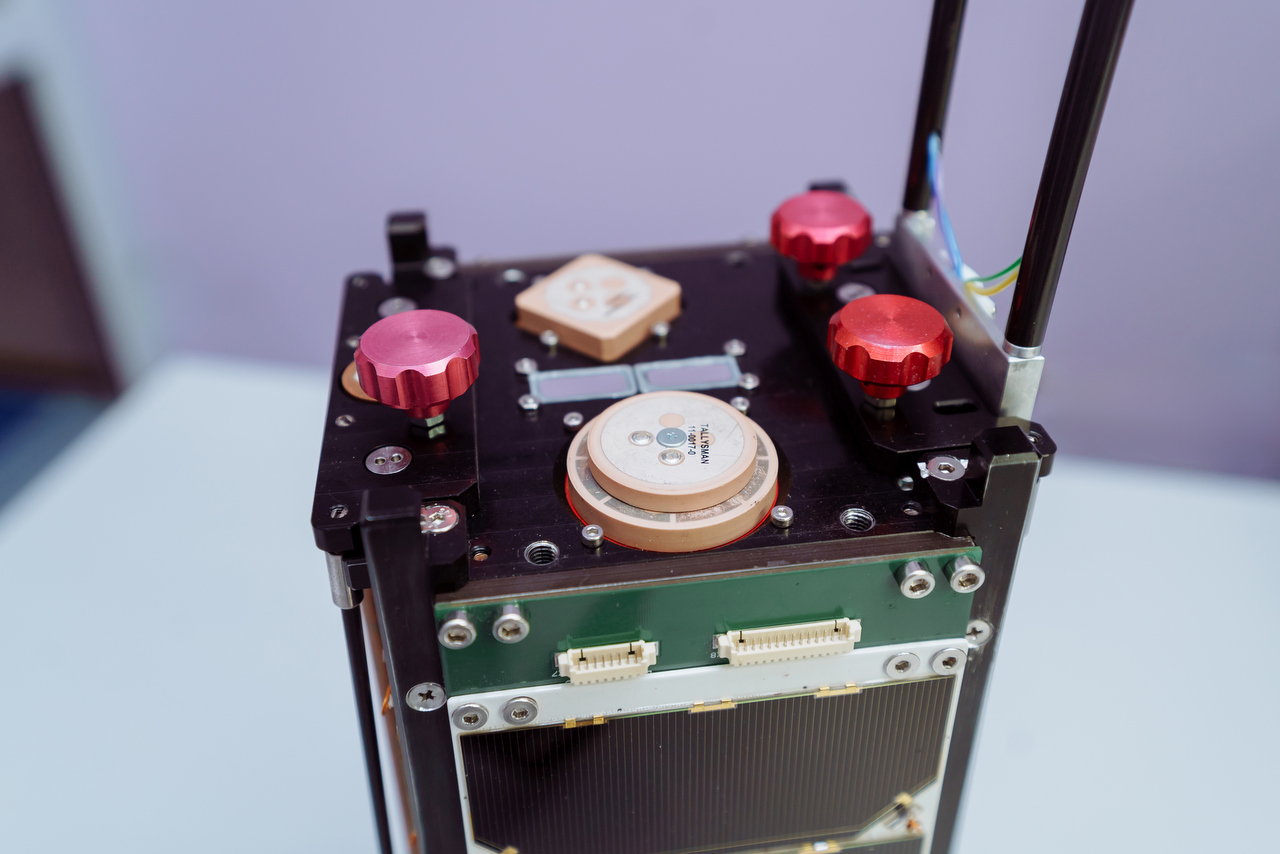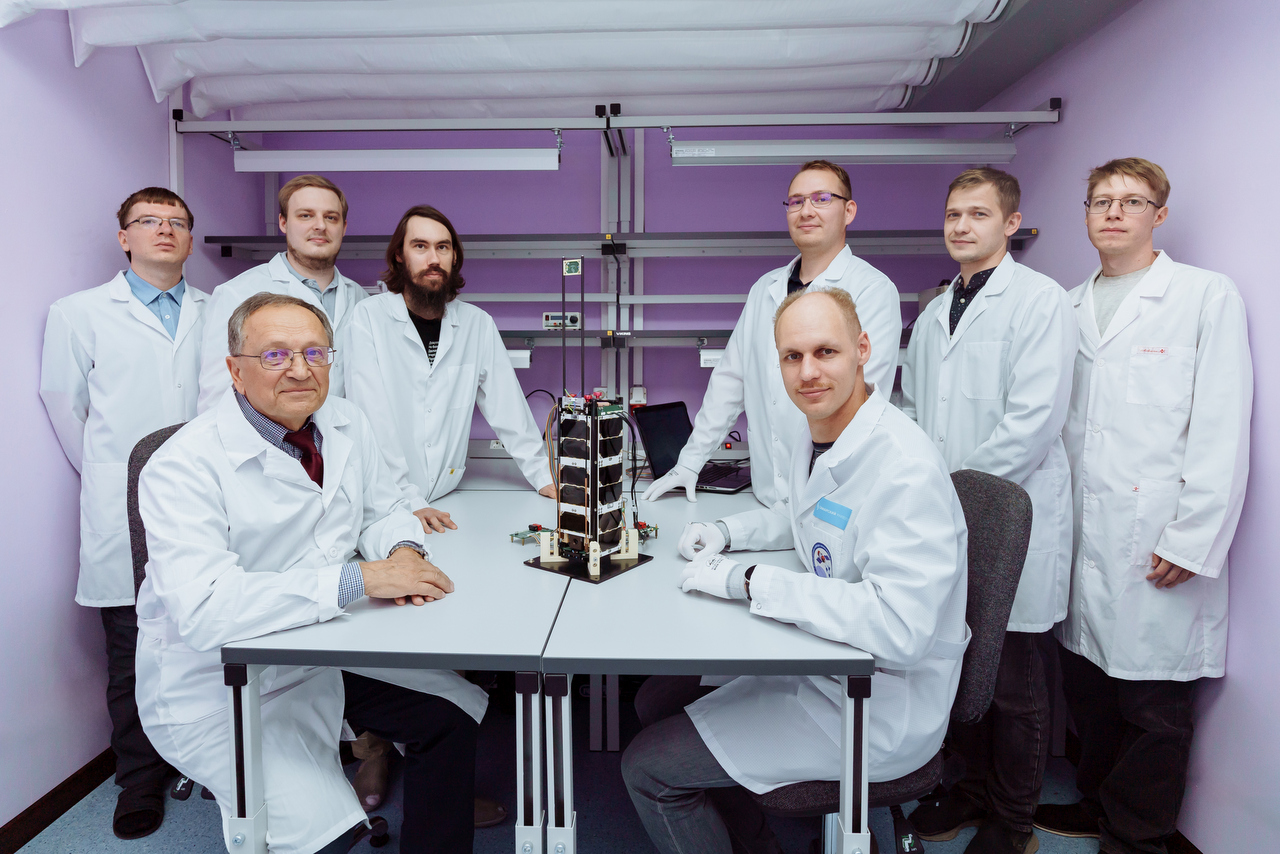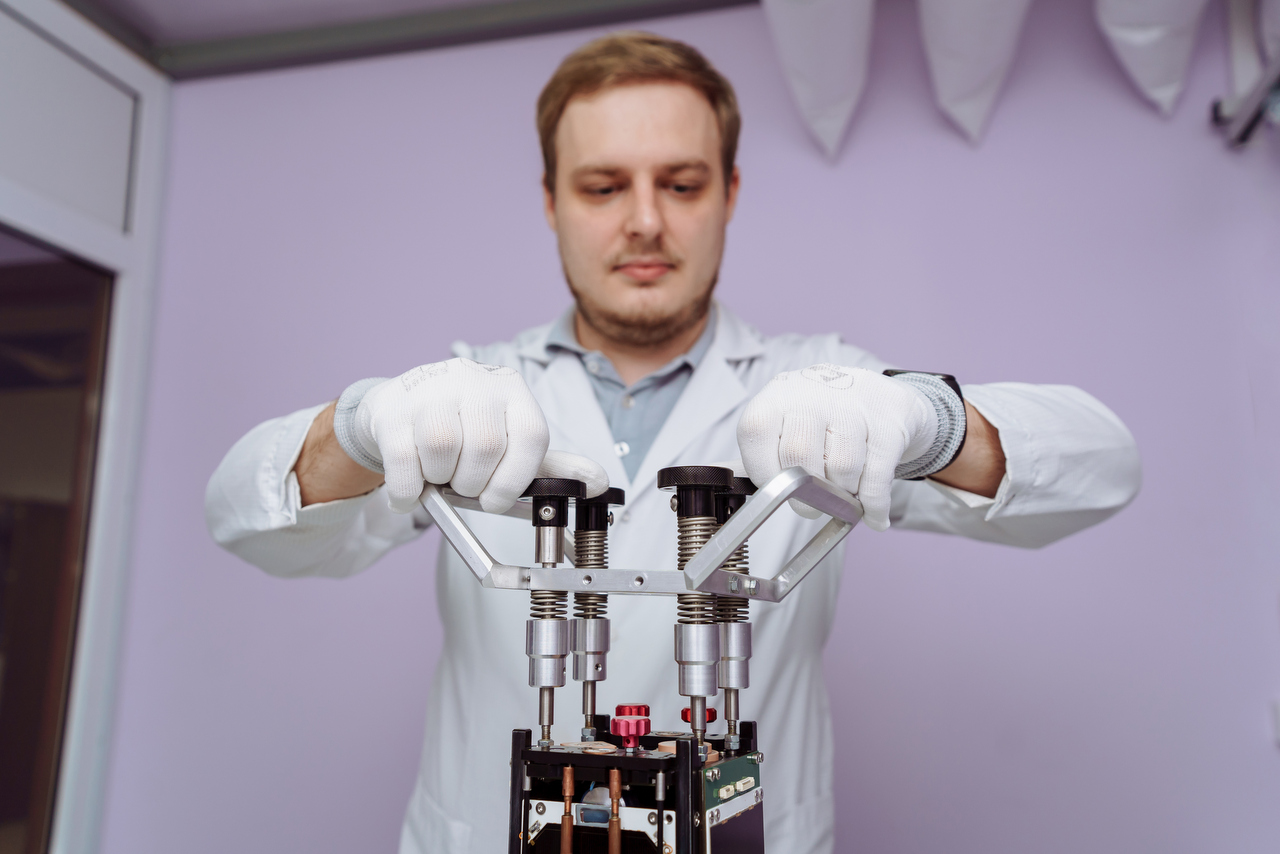In November, from the Vostochny cosmodrome, the SamSat-Ionosfera nanosatellite developed, manufactured, and tested in Samara National Research University was launched onto several hundreds of kilometers from the Earth. The spacecraft is designed to study the plasma and magnetic shells of the Earth. What and who are behind of successful launch and operation of the nanosatellite? These questions were asked of the Head of Project and Though Leader of this Sophisticated Process, Head of the Inter-University Department of Space Research, Professor Igor Belokonov.
— Why are the present and future in the aerospace in precisely nanosatellite technologies?
— This is not entirely exact wording — the issue is not about the “nano” prefix. The present and future are in advanced technologies. The nanosatellite technologies applicable to the aerospace is a definition of a class of technologies oriented to create elements of space equipment of lesser weight, lesser sizes, lesser cost within small periods of time and in large quantity. However, at the same time, addressed issues in a certain segment of space missions will be comparable with large spacecrafts.
It is on nanosatellites that feasibility and justifiability of novel technical solutions and ideas can be verified, which in future allows to avoid a negative result in case of their transfer on already large spacecrafts. As this takes place, development of space technologies must be accompanied with a large number of experiments on the orbit. The value of rare experiments is not high. As you know, founders of practical astronautics created and launched rockets, satellite with a high frequency. Sergey Pavlovich Korolev had been launching rockets one after another, one lunar support vehicle after another. This a natural process.
— Although the first spacecrafts were enormous compared with the modern ones...
— Back then, there were no miniature devices, digital technology, but only analogue technology that consumed a large amount of energy. However, even in those days, people understood that only by experiments in the aerospace they can understand and explain in which direction it is necessary to develop. Only experiments in the aerospace gives a final judgment for proposed solutions. Even Elon Mask launch vehicles with a sufficiently high frequency. Only in 2024, he performed four launches of super-heavy rocket Starship, I do not concern small vehicles of Starlink type: they are “ consumables” for him. Therefore, Musk accumulate experience, and he refines the technology.
— And when and how did the first nanosatellite appear?
— The first nanosatellite were launched into the aerospace in 2003. Actually, such format of satellites as we see it nowadays was firstly offered by two professors from the Standford University and California Technological Institute in 1999. In their opinion, to develop education in the field of space technologies, students must have a possibility to create satellites at the premises of their university. As large satellites and their launch on orbit around the Earth is an extremely expensive pleasure, a pragmatic approach was proposed: to create a new standard of satellite as a cube with the face size of 10 cm, they were named CubeSats. Within this standard, in the early 2000s, the first CubeSats were made, and gradually universities understood the importance of miniature spacecrafts for their own development, for upbringing of skilled personnel, acquiring new competences, and developing fresh ideas. By combining several CubeSats, it is possible to create satellites of a larger size, for example CubeSat 12U has sizes of 20×20×30 and a weight of even up to 20 kg.
As the format of CubeSat extremely rapidly grew in popularity, small business immediately responded to it, and a market of standard onboard systems, assemblies, elements appeared. The market, as you know, involves massive scale and gradual cheapening of the product. More and more universities began to try their strengths in space technologies, understood that to have an own satellite as asset is prestigious, and, in addition, large companies began to actively recruit the graduates of the university, who underwent such school.
— What happened next?
— Next universities posed a question: can the nanosatellites solve useful tasks in the aerospace? And it was found that yes, they can, but for this novel approaches to create scientific apparatus are necessary. Then a boom in development of small-sized scientific apparatus for nanosatellites happened, which, of course, stimulates creation and usage of nanosatellite even not only for educational purposes but also for obtaining novel information, including in commercial purposes. Sure, if you have ten nanosatellite and not only one, and each of them is equipped with scientific apparatus, then in certain cases this cluster can be comparable with functions of a large vehicle. As an example, we can mention private company Planet Labs that launched a cluster of nanosatellites, allowing to obtain an image of the whole surface of the Earth with the resolution of 3.5 meter once a day. So the era of multi-satellite clusters began.
— For which scientific tasks is a cluster of satellites necessary, and what role can universities play here?
— I explain on the example. Using one nanosatellite, you can examine the near-Earth space environment only on one orbit. If you have many launched satellite and they move in various orbits, then it is possible to obtain “three-dimensional” pattern of geophysical fields. In other words, from measurements in one point in one point of time a transition occurs, for example, to one-shot measurements in a plurality of points, which allows to build a space model of examined parameter for better understanding of processes taking place in the vicinity of our planet. Nanosatellites at the modern step of development can occupy a clear niche — to perform tasks for which large vehicles is not feasible to use due to great corresponding financial and time expenditures.
— In what do you see the future of nanosatellites?
— As the element base improves, nanosatellites can be in demand for interplanetary missions. The Americans, for example, used nanosatellites as auxiliary tool for mission MARCO to Mars. On this planet, a landing vehicle was landed, and in order to maintain connection with them during descent two nanosatellites were used for retranslation of signals to the Earth. Nanosatellites performed a flight to Mars together with basic spacecraft, and it was a brilliant result that proved feasibility of their use as auxiliary to support complex space missions.
— In what other “alien” missions can be nanosatellites used?
— If we, for example, speak about steps on the Moon, then firstly it is necessary to examine the cislunar cosmic space as it is poorly examined. What is the space from the Earth to the Moon? What factors of the cosmic space (radiation, cosmic rays, solar wind) do act here? How do they influence on workability of scientific apparatus and on biological objects within prolonged intervals of time? It is necessary to conduct a systematic monitoring and deep study of this area of the cosmic space.
— So are nanosatellites necessary for determination of radiation conditions about the Moon?
— This is one of their applications. It is necessary to obtain objective information about radiation conditions in the cislunar cosmic space. Once of the variants of problem solution can be usage of multi-satellite clusters that operate in strongly stretched orbits that almost reached the Moon. To solve such tasks, it is more effective to use microsatellite that are also built based on the CubeSat standard but have a larger size. Their data allow to enhance safety and reliability of future manned flights to the Moon.
— Which countries do have the most strong positions in nanosatellite technologies?
— At present it is difficult to find a country that does not have its own nanosatellite. These include countries of the Southeastern Asia, Latin America, India, China, Pakistan, Israel, USA, European countries — competition in the global level of nanosatellite is enormous.
— If competition is great then why do foreigners come to Russia, into Samara University in order to learn nanosatellite technologies? Your Advanced Space Technologies and Experiments in Space International Summer Cosmic School has been held since 2003, and for these years, more than 500 young people from 45 countries graduated from it.
— It is well-known that investment into education is the most effective money investment. In my view, our competitive advantage is active government support in engaging foreigners through the Rossotrudnichestvo (Russian Cooperation Agency) organization for obtaining educational services: It includes forming so called “soft power” when graduated foreigners leave with good feelings to our country, and this is really valuable because, as practice shows, these graduates become really people of position at their motherland.
As for education, our country has a great experience in the field of training young people in cosmic technologies. The high level of education in Russia is confirmed by the fact that the first steps in the space exploration were made by our citizens. Of course, for example, countries of the BRIC do not have a prolonged experience in training personnel for the cosmic industry as Russia has. Systems of education in our country and abroad are highly different as well. If we pay much attention to extracurricular individual work with students, involve them to participate in real projects, then the approach used abroad is different: they contribute strictly specific time to a student only during a class. As an example of active participation of foreign students in scientific work, I want to give such fact: in October 2024, five foreign students of the Inter-University Department of Space Research participated in the work of International Astronautical Congress in Milan (higher scientific and technical forum in the field of astronautics in the world).
— So is this a special Russian style of training?
— Yes, this is a style of initial goodwill, which was formed in our University towards our students, it spreads to foreigners as well. Young people feel good attitude and respond in spades. Moreover, the education includes not only theory but also practice: on November 5, from the Vostochny cosmodrome, the SamSat-Ionosfera nanosatellite developed, manufactured, and tested with the participation of students was launched. It is designed to study the plasma and magnetic shells of the Earth – the ionosphere and magnetosphere. Knowledge about the state of the ionosphere helps to predict and overcome interruptions in the operation of radio communication systems, navigation systems and even predict earthquakes. In addition, data on condition of the ionosphere are important for solving tasks on exploration of the Arctic and Antarctic. A large number of graduate qualification works of bachelors and masters are associated with the department projects of nanosatellites.
— Do students have a possibility to track the work of the SamSat-Ionosfera nanosatellite?
— Yes, of course! And I begin each my lecture from the overview of events in the orbit: today a nanosatellite transmitted such and such package of information, its location is such and such, we plan the introduction and perform such and such studies with scientific apparatus... And others. Moreover, our students are engaged in conducting communication sessions with the SamSat-Ionosfera nanosatellite. They are masters and the fourth course of the bachelor’s degree program. They compute when a satellite enters into the communication zone, from which direction, in order to correctly turn the antenna of our center of flight control. Each day we receive up to 100 packages of telemetry, this is a great amount. Such real work and engagement in interesting venture positively influence on young people and forms desire to stay in cosmic industry.
The world rapidly changes, and nanosatellites is such a platform based on which a basis of the large-scale astronautics of the planet now. As it is here that young people obtain the necessary skill, verify original ideas, test new technologies.
In April 2025, it is planned to launch one more our nanosatellite to solve tasks identical to tasks on study of the ionosphere, solving by already operated spacecraft. After that, we will have a cluster of nanosatellite in the orbit. Taking into account that in 2025, a cluster of “large” vehicles of the Ionozond project, which are also designed to study the ionosphere, will operate, it is hoped that we will be able to make a fair share of contribution in the joint activity.
— Which areas of improvement of your satellites do you see?
— Our existing vehicles have format of CubeStat 3U. This means that three cubes with faces of 10 cm are combined, and the final size is 10×10×30 cm. We virtually achieved the limitations of this format based on available element base. However, our satellites have a low speed for data transfer to the Earth, as the amateur band of radio waves is used. And now we create a transmitter for data transfer in the X band with a high speed. Once we create a high-speed radio line, we will be able to transmit a large volume of information from the orbit. Moreover, we have plans to create a flywheel system of orientation and stabilization of motion. At present we use magnet system of orientation, which cannot orient a satellite in the space with a high accuracy.
— How many nanosatellites can you produce at the premises of the University?
— During the recent visit into the University of the Head of the Roscosmos State Corporation Yury Ivanovich Borisov, we reported to him that we can produce up to tens nanosatellite of the SamSat-Ionosfera type per year. Using our capabilities, it would be possible to create the unique university cluster of nanosatellites for monitoring the Earth’s ionosphere. We began to create nanosatellite ten years ago, in 2014, and for these years we have traveled the entire path of the full cycle of creation of miniature spacecrafts from design, construction, production, testing to preparation and launch into the cosmic space and control them in the orbit. We plan to transit to a larger format of satellites, create microsatellites with a weight up to 20 kg, which will be able to solve more sophisticated tasks in the orbit.
Photo: Olesya Orina, Ivan Timoshenko
Source: firstsamara.ru
 RU
RU  EN
EN  CN
CN  ES
ES 